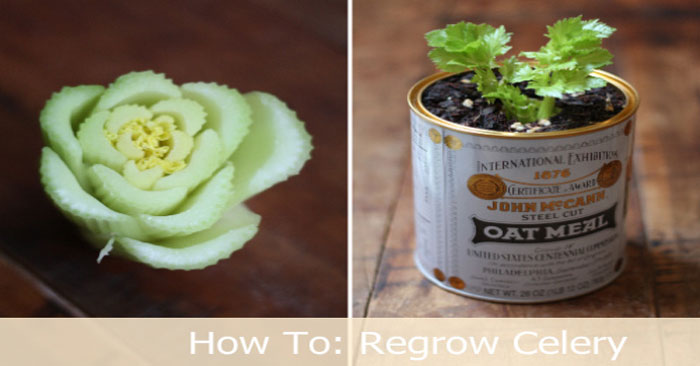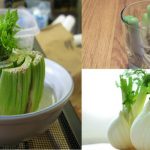Crunchy, crispy celery is well-known for being low in calories, but its health benefits go far beyond its use as a diet food. Celery contains useful phytonutrients, vitamins and minerals.
In addition to its antioxidant and anti-inflammatory nutrients that help protect the digestive tract as a whole, celery contains pectin-based polysaccharides that can provide the stomach with special benefits. It’s a convenient on-the-go snack as well as a vegetable that can be incorporated into cooked dishes, stir-fries and salads.
Now, let’s test out this little indoor gardening project— regrowing celery from its base.
This project is almost as simple as the onion growing project: simply chop the celery stalks from the base of the celery you bought from the store and use as you normally would. In our case, we had a particular homemade bean dip that needed sampling!
Instead of throwing away the celery base, rinse it off and place it in a small saucer or bowl of lukewarm water on or near a sunny window sill — base side down and cut stalks facing upright.

We let our celery base hang out in the saucer of water for about 1 week. Over the course of the week, the surrounding stalks began to dry out significantly, but the tiny little yellow leaves from the center of the base began thickening, growing up and out from the center, and turned dark green. The growth was slow, but steady and evident.
After 5-7 days, we transferred our celery base to a planter and covered it completely, except for the leaf tips with a mixture of dirt and potting soil.
We watered it generously and after planting in the soil, the overall growth really took off. Not only do we have celery leaves regenerating themselves from the base, but you can see clear stalks making their way up and out.
It’s really fascinating what we have seen not even a week after planting it:
A few notes:
- Change out the water every couple of days while in the “saucer” phase of the project. We also used a spray bottle to spray water directly onto the base of the celery where the leaves were growing out.
- The tutorials we saw showed planting the celery directly into the dirt outside — you may want to go this route if you live in a temperate area or want to be able to harvest outdoors.
- Continue to generously water the celery after planting to keep it thriving.
After a few more weeks of growing time on our sunny window sill, our celery has continued to thrive. The leaves have grown out generously and bushy and the celery stalks underneath have really taken shape:
At this stage, we’ve been actually able to cut off stalks as needed in recipes and the celery continues to regenerate leafy stalks from the center of the plant.
For anyone wondering about the planter, we made it by recycling a tin of steel cut oats we’d since finished. We simply cleaned it out well, then punctured holes along the base to create drainage for the plant.
We placed a thin layer of mulch at the base to help with drainage, followed by a thick layer of dirt/potting soil mixture. After placing the celery base snugly in the planter, we filled the remaining space with more dirt/potting soil to completely cover the celery base. We kept the top to the oats tin and flipped it over to place the new planter on top of it — the lid is a perfect custom fit to the base and catches any runoff from regular watering.









